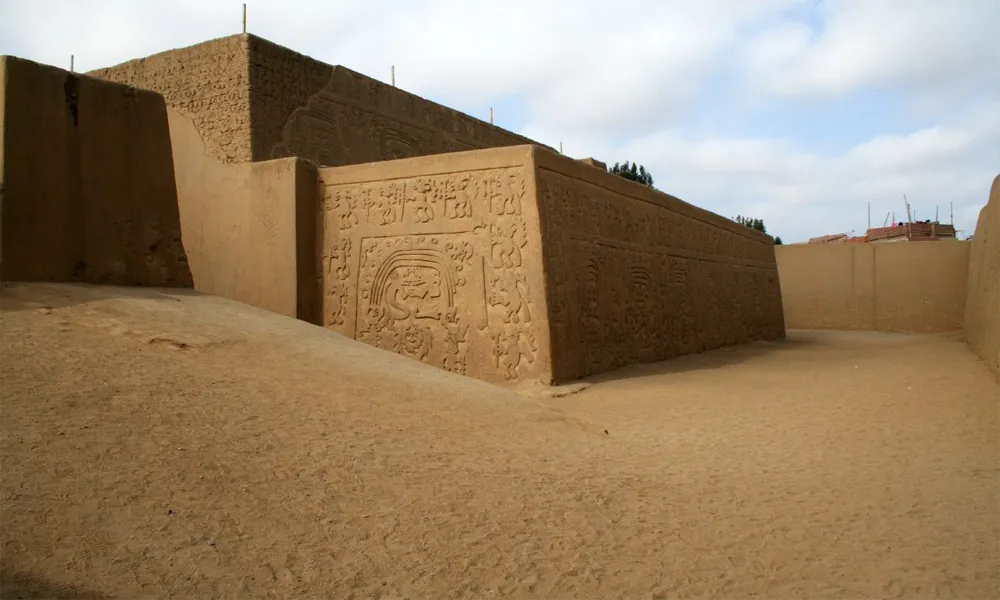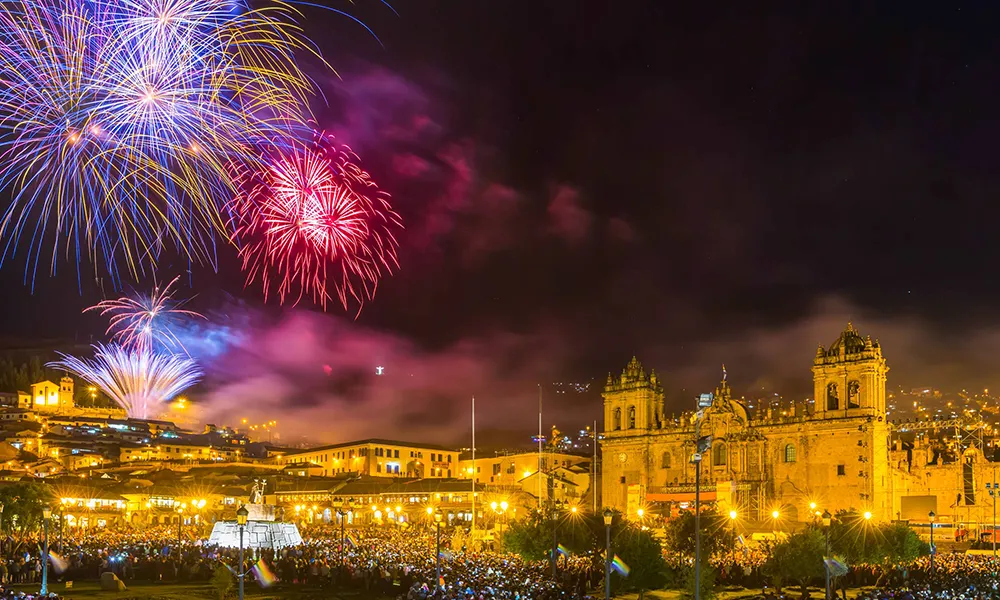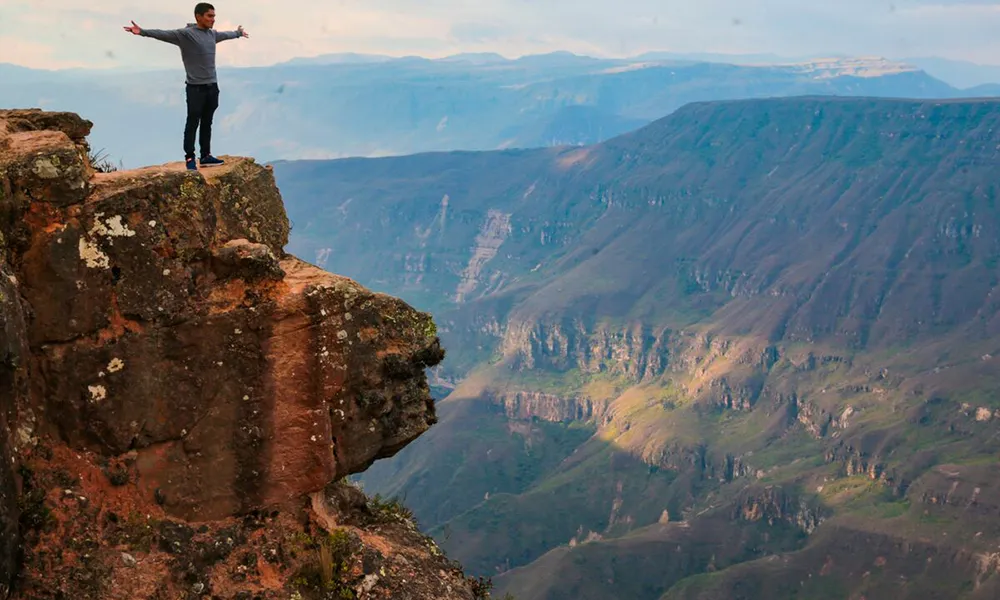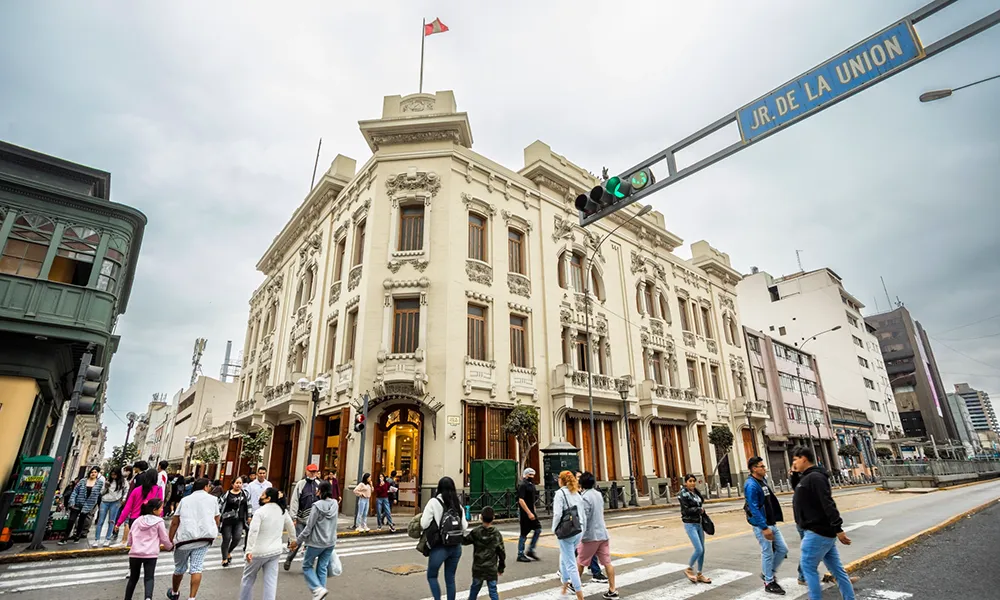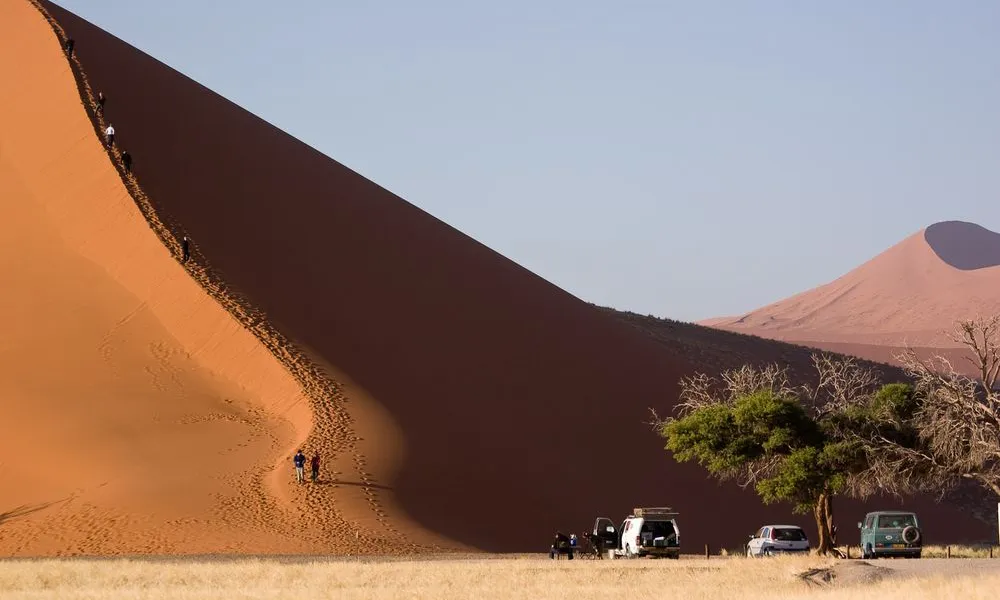Huacas del Sol and Huaca de la Luna in Trujillo
Long before Machu Picchu rose above the Andes, an extraordinary civilization ruled Peru’s arid north coast — the Moche. From roughly the 1st to the 8th century AD, these people built enormous adobe pyramids, irrigated desert valleys, and created one of the most sophisticated artistic traditions of the ancient Americas.
Just outside the modern city of Trujillo, the twin temples known as the Huaca del Sol and the Huaca de la Luna stand as enduring monuments to that civilization’s genius. They form the sacred and administrative center of the Moche Valley, where rulers governed, priests performed ceremonies, and artists painted the stories of their gods on sun-baked walls.
For American travelers, these huacas offer a rare opportunity to step back in time — to see what life looked like centuries before the Inca Empire. The experience combines archaeology, art, and desert scenery in one of Peru’s most captivating cultural landscapes.
🏛️ The Moche Civilization and Its Legacy
The Moche were master builders and visionaries of the northern coast. They organized their society around irrigation canals that transformed dry valleys into fertile farmland. Their economy thrived on fishing, agriculture, and trade with the Andes and Amazon. Yet it was their religious architecture and art that left the most powerful mark.
Each Moche center featured ceremonial pyramids — huacas — built layer upon layer with millions of sun-dried bricks. Every brick bears the unique maker’s mark of the community that produced it, proving how collective and organized their construction was. Within these temples, priests conducted rituals, sacrifices, and festivals dedicated to the forces of nature: the sea, the mountains, and the moon.
The Moche world revolved around duality — sun and moon, life and death, fertility and sacrifice. The Huaca del Sol and Huaca de la Luna symbolized these cosmic balances.
🏗️ Huaca del Sol — Temple of the Sun
The Huaca del Sol was the political and administrative heart of the Moche capital. It once towered nearly 160 feet (50 meters) high and covered five hectares, making it the largest adobe structure in the Americas. Archaeologists estimate that more than 140 million handmade bricks were used to build it.
Its purpose was to house rulers, nobles, and state ceremonies. Though Spanish colonists partially destroyed it in the 1600s while searching for treasure, its sheer scale remains impressive. Standing before it, travelers can still imagine the vast pyramid glowing red at sunset, dominating the desert skyline like a sacred mountain made by human hands.
🎨 Huaca de la Luna — Temple of the Moon
While the Temple of the Sun symbolized earthly power, the Huaca de la Luna embodied the spiritual soul of the Moche. This temple is remarkably well-preserved, revealing vivid murals, plazas, and altars that once served as the setting for rituals and offerings.
The structure consists of six superimposed levels, each built atop the previous one during different ceremonial eras. Inside, archaeologists uncovered walls painted in red, yellow, white, and blue — colors that still retain their intensity after fifteen centuries. The recurring figure is Ai Apaec, the “Decapitator God,” protector of warriors and bringer of fertility.
These murals illustrate the complexity of Moche religion. Scenes show priests in elaborate headdresses, dancers carrying banners, and warriors presenting captured enemies. For visitors, they offer a direct, almost cinematic connection to an ancient worldview where nature and divinity merged.
🧱 Urban and Ceremonial Complex
Between the two temples stretched the ancient Moche urban center, a landscape of houses, storage rooms, and workshops. Archaeologists found evidence of metallurgy, textile production, and pottery firing — proof that the site functioned as both a political capital and a city of artisans.
Nearby, the Huacas de Moche Museum displays finely modeled ceramics shaped as faces, animals, and deities; gold ornaments; and detailed reconstructions of the temples. The exhibits help visitors grasp how advanced this desert civilization was in architecture, social organization, and art.
🕰️ Timeline of the Huacas
-
100 AD – 400 AD: Early construction phases of the Huaca de la Luna. The Moche establish their ceremonial center.
-
400 AD – 700 AD: Expansion of the Huaca del Sol. Political consolidation and military strength peak.
-
700 AD – 800 AD: Climatic changes and internal conflicts contribute to the Moche decline, but their artistic heritage spreads across northern Peru.
-
1602: Spanish treasure hunters redirect the Moche River, eroding part of the Huaca del Sol in search of gold.
-
1990s–Present: Ongoing archaeological excavations bring new discoveries, revealing human burials, ritual plazas, and thousands of decorated bricks.
🏞️ What to See and Experience
1. Huaca de la Luna Tour
Guided visits lead through ceremonial courtyards, mural chambers, and ancient stairways. The air feels heavy with history; the desert wind passes through spaces once filled with chanting and incense.
2. Murals of Ai Apaec
Look for the deity’s multiple faces stacked one above another — each expression representing transformation, strength, and renewal.
3. The Sacrifice Plaza
This open square reveals the Moche belief in cosmic balance. Archaeologists discovered offerings and human remains here, confirming descriptions seen on Moche pottery.
4. Huaca del Sol Viewpoint
Though not open inside, a nearby viewpoint gives a striking panorama of its massive form and the valley beyond.
5. Cerro Blanco Sacred Mountain
Rising behind the temples, this natural peak was part of the sacred landscape. Locals still consider it a protector spirit of the valley.
🚗 How to Get There
The site lies five kilometers (three miles) southeast of downtown Trujillo.
-
From the main plaza, it’s about a 15–20-minute drive by taxi.
-
Tours depart daily from hotels and travel agencies.
-
Flights from Lima to Trujillo take roughly one hour.
Entrance is inexpensive, and English-speaking guides are available. Visiting both the temple and museum takes around two to three hours.
🌤️ Best Time to Visit
Trujillo enjoys a mild desert climate year-round.
-
Best months: April to December (dry season).
-
Avoid: February and March, when coastal rains occasionally occur.
-
Best light: Early morning for photography; late afternoon for golden-hued walls.
🧭 Travel Tips for American Visitors
-
Wear light, breathable clothing, sunscreen, and a hat.
-
Carry water and comfortable shoes for walking on sand and uneven terrain.
-
Hire a licensed guide — their stories bring the site to life.
-
Bring local currency for small purchases and donations to community projects.
-
Respect the marked paths to protect fragile adobe structures.
-
Combine your visit with Chan Chan, Huanchaco Beach, and the El Brujo Complex for a full northern Peru experience.
🍽️ Nearby Culture and Cuisine
After exploring the huacas, head to the town of Moche to enjoy authentic coastal Peruvian flavors:
-
Ceviche de Pescado: fresh fish marinated in lime and ají chili.
-
Arroz con Pato: duck with rice flavored with cilantro and beer.
-
Chicha de Jora: a traditional corn drink with ancestral roots dating back to the Moche era.
These dishes carry forward the region’s heritage of fertility and hospitality — the same values once celebrated in Moche festivals.
🎭 Symbolism and Art of the Moche
The Moche were extraordinary storytellers. Every ceramic and mural functioned as a visual narrative recording their cosmic beliefs. Common motifs include the octopus as a symbol of the sea, the owl representing wisdom and night, and the warrior-priest embodying divine authority.
Their art was not decorative; it was sacred communication. The combination of vivid colors and geometry in the Huaca murals continues to influence modern Peruvian design and craftsmanship.
🕯️ Spiritual and Cultural Meaning
The Huacas del Sol and de la Luna were not just temples — they were gateways between worlds. The Moche believed the mountain behind them housed their ancestors and that their rituals ensured rain, harvest, and order in the universe.
Today, visiting the temples is an act of respect for that spiritual continuity. Standing in front of the painted walls, you sense the silence and weight of centuries — a connection that transcends time and language.
🌺 Conclusion
The Huacas del Sol and Huaca de la Luna represent the essence of northern Peru’s ancient identity — a place where the desert meets the sea and human ingenuity conquered the impossible.
For American travelers, this site is a journey into one of the oldest civilizations of the Americas, a civilization that built its temples from earth and faith instead of stone. It’s a destination where you don’t just see history — you feel it under your feet, painted on walls, and carried by the dry coastal wind.
Trujillo’s Huacas remind us that the past is never lost. It waits quietly in the desert, ready to speak to those who come with curiosity and respect.


